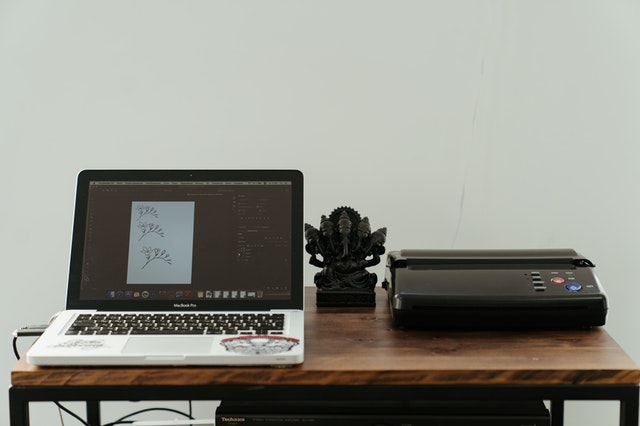How ZeeTim solves the challenges involved in moving to a remote employee organization
In the last decade, getting the “option of working remotely” as part of the employment agreement was a cherry on top of the cake. It was rare and considered an extra perk that the companies would offer employees. However, things have drastically changed since last year due to the global pandemic that has plagued the globe. Covid-19 has forced companies to rethink how to organize their workforces so that they can continue their business as usual even during these difficult times. As a result, setting up the required infrastructure allowing employees to work remotely was one of the major challenges for companies.
As a side effect of the disease, many companies realized that certain parts of their organization are able to function fine remotely and that there’s no need for a formal office space. Having realized this, many companies have decided to continue to allow workers to do their job remotely. Although rare, some companies worked fully remotely even before the pandemic. One of the best examples is GitLab. It’s a company with 1200+ employees, all of them working remotely. It’s the world’s largest all-remote organization and currently has team members in 67 locations . And with the tools and solutions presently available, many companies are moving in the same direction.
What does an organization need for allowing its employees to work remotely in a secure manner?
Work from home sounds very attractive but before allowing its employees to work from home, the company has to adopt some measures to make it convenient, manageable, and more importantly secure. Below are some common challenges that a company has to tackle and also how ZeeTim can help them in resolving them.
Secure Endpoint Device
The very first requirement for remote work is to have a device that is capable enough to do the things required by the employees. Usually, employees use their personal machines at home. But this can be a serious security flaw as those devices are prone to attack from mischievous parties. There’s no guarantee that those are up to date with the latest security updates and there’s no pre-existing malware or virus present.
On top of that, the employees have to set up certain elements themselves. To tackle this, some companies provide company-issued laptops. While this resolves certain issues, there’s no guarantee because these devices are still not under the control of the company and are prone to external attacks and data theft.One of the best options is to provide a Thin Client to the employees. Thin clients come with many benefits out of the box. You can read more about the benefits of thin clients. ZeeTim provides an ultra-secure thin client endpoint device known as ZeeTerm. ZeeTim also has a software-based endpoint solution known as ZeeTransformer. It allows converting existing machines into a secure endpoint device permanently or just while working. So, now employees can convert their existing home machines into a secure endpoint device. The end-user not only have a secure link (via VPN) but a complete secure workspace to work in and the company can manage them efficiently and they do not necessarily need to invest in expensive thin client hardware.
Endpoint Device Management

Thin clients are an interesting solution for remote work, but it is also crucial that they come with a good management tool that allows you to manage and configure the machines. Some of the key functionalities that it should offer are the ability to configure multiple devices together, manage security settings, apply updates as and when necessary, etc. The endpoint device management tool is the backbone of an endpoint solution. ZeeTerm/ZeeTransformer comes with a very powerful and intuitive management tool known as ZeeConf. It allows you to manage and support thousands of endpoint devices locally or from anywhere around the globe. You can set it up in a multi-tenant mode to easily manage multiple companies or divisions and also gain control of the devices remotely through a secure remote connection, only upon user approval. Its templating feature allows you to create a configuration template, so you can apply it on multiple devices or groups of devices. It also has role-based administration capability, permitting you to assign certain devices to certain administrators. In addition, it comes with a clear and precise reporting feature, giving significant insight into the endpoint devices.
Multi-factor Authentication

When it comes to security, the most used approach by the companies is to set up a VPN which employees use to connect remotely. However, exposing internal infrastructure over the internet is always a risk. It can attract a lot of attention from bad parties which can try to overload the VPN servers, force user account lockout, etc. The best and simplest add-on to this is to add one more factor of authentication to the connection gateway and make it MFA compliant. And there’s no doubt that MFA is a need of the hour. For MFA, ZeeTim proposes ZeeOTP, a cloud or on-premise OTP solution. With ZeeOTP it is very easy to add OTP as an authentication factor to an application or even an application server. It supports multiple ways to deliver the OTP to the end-user such as, push notification, SMS, E-mail, and even physical hardware tokens. With an on-premise version and high availability option, you can be certain that it will always serve your OTP needs and the data will never go out of the company’s network. It comes with a web-based management console allowing you to manage all the aspects of the solution from a single place. The web console also has a reporting dashboard that provides insights on the authentications being done by various devices of the end-users.
Remote Printing

While working from the office, printing on an enterprise printer from the virtual session is quite common and these printers are pre-configured by the administrators. However, now with remote work, it can be a daunting task for the administrator to configure all the local printers for all of the employees. It increases the amount of work to be done along with managing all the drivers for different types of printers. Even in a medium-size company, this can create a tremendous amount of workload and add complexity to the print management system.
But thanks to ZeePrint, this can be done with great simplicity. The task of creating multiple printers on the server can be replaced by a single virtual printer and a single driver. Once this is done, no matter which endpoint or which remote desktop protocol the user is using, they can print directly on their local printer. The virtual printer generates a PDF of the document and sends it locally. Moreover, ZeePrint compresses the print job, which results in bandwidth optimization without losing the quality of the printed document.
With these various products, ZeeTim becomes a one-stop-shop for Thin or Zero clients, central endpoint management, enhanced security with multi-factor authentication, and optimized printing. This is a unique offer for companies willing to improve and secure their infrastructure, as they don’t have to deal with different vendors for each of these needs. On top of that, all of the products are platform-agnostic and can be easily integrated with other solutions.
Please get in touch with ZeeTim to learn more about our solutions and test our products.
Tags In
Search
Recent posts
- ZeeScan is now available on the VMware Marketplace 22 April 2024
- The main Cybersecurity risks of remote work: Safeguarding your infrastructure in a connected world 3 April 2024
- Introducing the latest version of ZeeScan! 22 February 2024
- Chromebooks in Business: Advantages and Challenges to Consider 19 February 2024
- Happy New Year from all of us at ZeeTim! 1 January 2024




